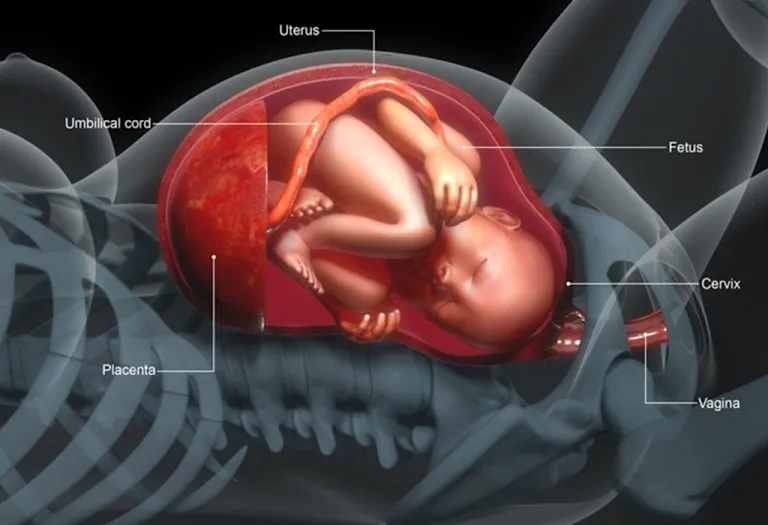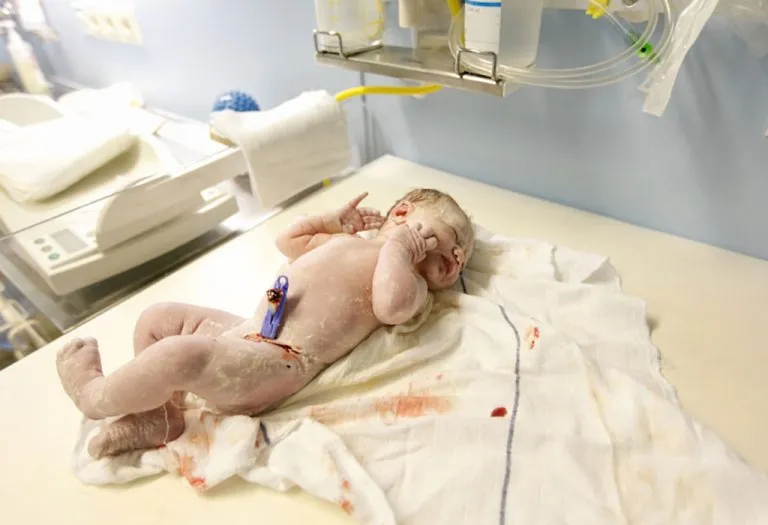Velamentous Insertion of Umbilical Cord – Causes, Signs and Treatments

Pregnancy is a wonderful journey that brings a lot of changes to a woman’s body. But, if you are pregnant for the first time, you will not be aware of what changes it will bring and you might even ignore some changes, considering them as normal. However, it is important to look for signs that may indicate that something is amiss. One of the causes of an abnormal pregnancy is velamentous cord insertion. There are various signs and causes to look out for when it comes to this, and here we will also list down how to identify and treat such a condition.
What Is a Velamentous Cord Insertion?
Velamentous cord insertion is a case of an abnormal pregnancy where the umbilical cord is abnormally inserted into the placenta. In a normal pregnancy, the blood travels from the centre of the placenta into the baby’s blood vessels via the umbilical cord. With a velamentous cord insertion, the baby’s blood vessels remain unprotected, and the jelly-like substance that surrounds them, i.e. Wharton’s jelly’ is missing.
During a normal development period, the umbilical cord attaches correctly to the centre whereas, in a velamentous one, the cord inserts itself into the amniotic membrane, rather than in the placenta. It is a rare complication that needs to be regularly monitored by the doctor in order to ensure that both the mother and the baby are healthy. An occurrence can be detected early on in the pregnancy; it can prove to be dangerous if not addressed. It is easy to see during the second trimester of the pregnancy.
Causes of Velamentous Cord Insertion in Pregnancy
In 90% of pregnancy, the umbilical cord either inserts normally into the centre portion of the placenta or is slightly off centre; however, it is very different in case of a velamentous cord insertion. There are no definitive causes fora velamentous cord insertion, however, some of the possible causes are as follows:
- If the mother is older then there is a possibility of velamentous cord insertion.
- If there is a chance of multiple pregnancies, then there is a possibility of velamentous cord insertion.
- If the mother smokes during the pregnancy, then also there are higher chances of the condition to occur.
- Miscarriages in the past may also increase the chances of this condition.
Difference Between Marginal Cord and Velamentous Cord
Velamentous cord insertion is more concerning than marginal cord insertion, particularly in the case of twins. This is because, in marginal cord insertion, the umbilical cord is attached to the placenta in a more typical manner.
Generally, marginal cord insertion doesn’t have significant adverse effects. However, infants with velamentous cord insertion face a high risk of haemorrhage or blood loss because their umbilical blood vessels lack the protective covering of umbilical tissue.
Who Is Most at Risk?
Mothers who are older and the ones who are having multiple pregnancies, such as twins or triplets, are at most risk for a velamentous cord insertion. Many studies have shown that it is a condition which cannot be prevented and can happen to any woman who is in her maternal age.
Risk Factors for Velamentous Cord Insertion
The condition is 9 times more common if it is a twin pregnancy than a single pregnancy. If it is a case of multiple pregnancies then the risk of a velamentous cord insertion is high for a mother. If a mother smokes then the chances increase more of a velamentous cord insertion. Although, please do note that while these have been possible risk factors, there is no guarantee that you will not develop this condition. Utmost care must be taken during pregnancy to ensure a happy and healthy baby.
Signs of a Velamentous Cord Insertion
There are several signs of a Velamentous cord insertion early on in the pregnancy itself, which can be detected so that the parents-to-be can discuss the next steps.
Some of the signs are:-
- A decrease in blood supply to the foetus. This can be detected during routine checks.
- Growth and development of the foetus is not up to the standard pregnancy.
- Blood vessel compression is also another sign.
- Excessive bleeding or haemorrhage during velamentous cord insertion delivery.
How Is the Diagnosis Done?
It is easy to diagnose a velamentous cord insertion. One of the best ways to do it is through an ultrasound. During the early days of the pregnancy, preferably in the second trimester, it is good to get velamentous cord insertion ultrasound to understand the baby’s growth and development. It is also the right time to check for a velamentous cord insertion, and this can be done via ultrasound.
How Is Velamentous Cord Insertion Treated?
While there is no treatment or medicines for a Velamentous cord Insertion, precautions can be taken to manage the growth and development of the foetus. All treatment is directed towards managing complications related to the foetus thereby making it a top priority. Delivery through an elevated C- section is considered in order to avoid further complications.
Complication of a Velamentous Cord Insertion
While most delivery occurs normally even with a velamentous cord insertion, there are several complications that can occur with the condition sometimes. Here are the complications associated with it:
- Preterm birth.
- It can cause the blood flow towards the foetus to reduce thereby affecting its development and growth.
- Less blood flow can also result in intrauterine growth retardation and other congenital abnormalities.
- Compression of blood vessels can cause foetal distress.
- The velamentous cord insertion survival rate is impacted by excessive blood loss during delivery, which can lead to fetal mortality.
- If the velamentous membrane blood vessels are inside the cervical outlet of the uterus, it may rupture leading to early labour and stillbirth. It is known as vasa previa.
How Can You Prevent a Velamentous Cord Insertion?
At present, there is no clear-cut way to prevent this condition from occurring. However, velamentous cord insertion precautions can be taken to ensure a healthy and safe natal care. It is important for the mother to not smoke or drink during pregnancy as it can lead to many other complications apart from a Velamentous cord insertion. In the majority of the cases, the delivery will be normal, but it is important to consult your gynaecologist and prepare a birth plan if you have been diagnosed with this condition.
FAQs
1. Does Velamentous Cord Insertion Happen Multiple Pregnancies and Why?
Yes, velamentous insertion of umbilical cord can occur in multiple pregnancies. This happens because the placenta’s location and structure can vary, leading to the possibility of velamentous insertion in subsequent pregnancies.
2. Can the Insertion of Velamentous Cord Heal Itself?
No, velamentous cord insertion cannot heal itself. It is a structural abnormality in the placenta’s attachment to the uterus and requires medical attention for proper management and monitoring.
It is important to find out if you have a velamentous cord insertion at the very beginning of the pregnancy so that you can prepare and ensure a good pregnancy plan and birth.
References/Resources:
1. Velamentous cord insertion; isuog.org; https://www.isuog.org/clinical-resources/patient-information-series/patient-information-pregnancy-conditions/placental-anomalies/velamentous-cord-insertion.html
2. Velamentous Cord Insertion; birthinjuryhelpcenter.org; https://www.birthinjuryhelpcenter.org/abnormal-cord-insertion.html
3. Velamentous Cord Insertion; my.clevelandclinic.org; https://my.clevelandclinic.org/health/diseases/24111-velamentous-cord-insertion
4. Umbilical cord conditions; marchofdimes.org; https://www.marchofdimes.org/find-support/topics/birth/umbilical-cord-conditions
5. Velamentous Cord Insertion; birthinjuryhelpcenter.org; https://www.birthinjuryhelpcenter.org/abnormal-cord-insertion.html
6. Velamentous insertion of cord; safercare.vic.gov.au; https://www.safercare.vic.gov.au/coding-queries/velamentous-insertion-of-cord
7. Diagnosis and management of vasa previa; smfm.org; https://www.smfm.org/publications/215-diagnosis-and-management-of-vasa-previa
8. Deborah M. Feldman, Adam F. Borgida, Walter P. Trymbulak, et.al; Clinical implications of velamentous cord insertion in triplet gestations; ajog.org; https://www.ajog.org/article/S0002-9378(02)47684-3/fulltext#%20; April 2002
9. Donald N. Di Salvo, Carol B. Benson, Faye C. Laing, et.al; Sonographic Evaluation of the
Placental Cord Insertion Site; ajronline.org; https://www.ajronline.org/doi/pdfplus/10.2214/ajr.170.5.9574605; May 1998
Also Read:
Uterus Abnormalities
Placental Insufficiency
Preeclampsia in Pregnancy
Endometriosis and Pregnancy Risks
Was This Article Helpful?
Parenting is a huge responsibility, for you as a caregiver, but also for us as a parenting content platform. We understand that and take our responsibility of creating credible content seriously. FirstCry Parenting articles are written and published only after extensive research using factually sound references to deliver quality content that is accurate, validated by experts, and completely reliable. To understand how we go about creating content that is credible, read our editorial policy here.























